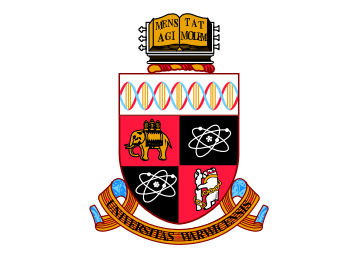
PhD Thesis
September 2015 - April 2020
My PhD journey was an enlightening experience that made me realize my eclectic academic interests. The most challenging part was narrowing my focus to one specific area. Ultimately, I embraced my diverse interests and delved into abstract algebra, geometric group theory, graph theory, probability, and even a substantial amount of programming. My thesis, which can be viewed here, is essentially a compendium of the research I undertook during my tenure at University of Warwick.
The initial segment of my thesis endeavored to weave the concept of group presentations into the realm of vertex-transitive graphs. Such graphs are distinguished by their high symmetry, making each vertex virtually identical. Their automorphism group and transitive subgroups bridge directly to group theory. In group theory, presentations are indispensable, facilitating algorithmic actions and the application of numerous abstract techniques from algebra and the nuances of geometric group theory. Inspired by this, I introduced a presentation for vertex-transitive graphs, enabling the adoption of similar methodologies. I went on to demonstrate that every vertex-transitive graph can have a presentation. Additionally, I made strides towards determining the conditions under which such a presentation results in a vertex-transitive graph. This research culminated in two papers: Presentations for vertex-transitive graphs and A study of 2-ended graphs via harmonic functions, both co-authored with my supervisor, Professor Agelos Georgakopoulos.
The subsequent section was a continuation of my master's thesis work with Dmitriy Rumynin where we explored the intricacies of 2-groups, 2-characters, and Burnside rings. I proffered more elementary proofs of the results documented in the paper. This approach enabled us to infer a noteworthy conclusion about 2-characters from a paper by Orsorno, a joint effort with Katerina Hristova.
Throughout the progression of my thesis, my objective was to demystify some of the more complex facets of mathematics and draw parallels with other better-established fields. The entire process was deeply rewarding, providing me with invaluable insights into abstraction and the art of problem-solving.